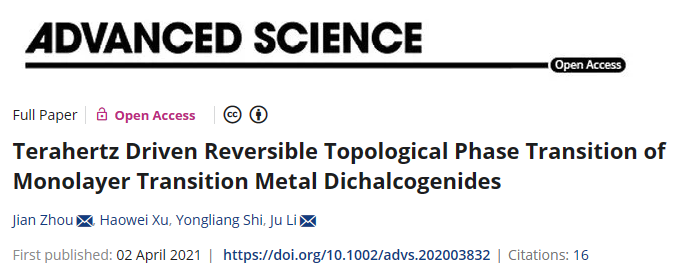
This paper shows how terahertz light can drive ultrafast topological phase transitions in monolayer transition metal dichalcogenides (TMDs). The phase transition is induced by the light interaction with both electron and phonon subsystems in the material. The mechanism of such a phase transition is formulated by thermodynamics theory: the Gibbs free energy landscape can be effectively modulated under light, and the relative stability between different (meta-)stable phases can be switched. This mechanism is applied to TMDs and reversible phase transitions between the topologically trivial 2H and nontrivial 1T′ phases are predicted, providing appropriate light frequency, polarization, and intensity are applied. The large energy barrier on the martensitic transformation path can be significantly reduced, yielding a small energy barrier phase transition with fast kinetics. Compared with other phase transition schemes, light illumination has great advantages, such as its non-contact nature and easy tunability. The reversible topological phase transition can be applicable in high-resolution fast data storage and in-memory computing devices.
Link:https://onlinelibrary.wiley.com/doi/full/10.1002/advs.202003832